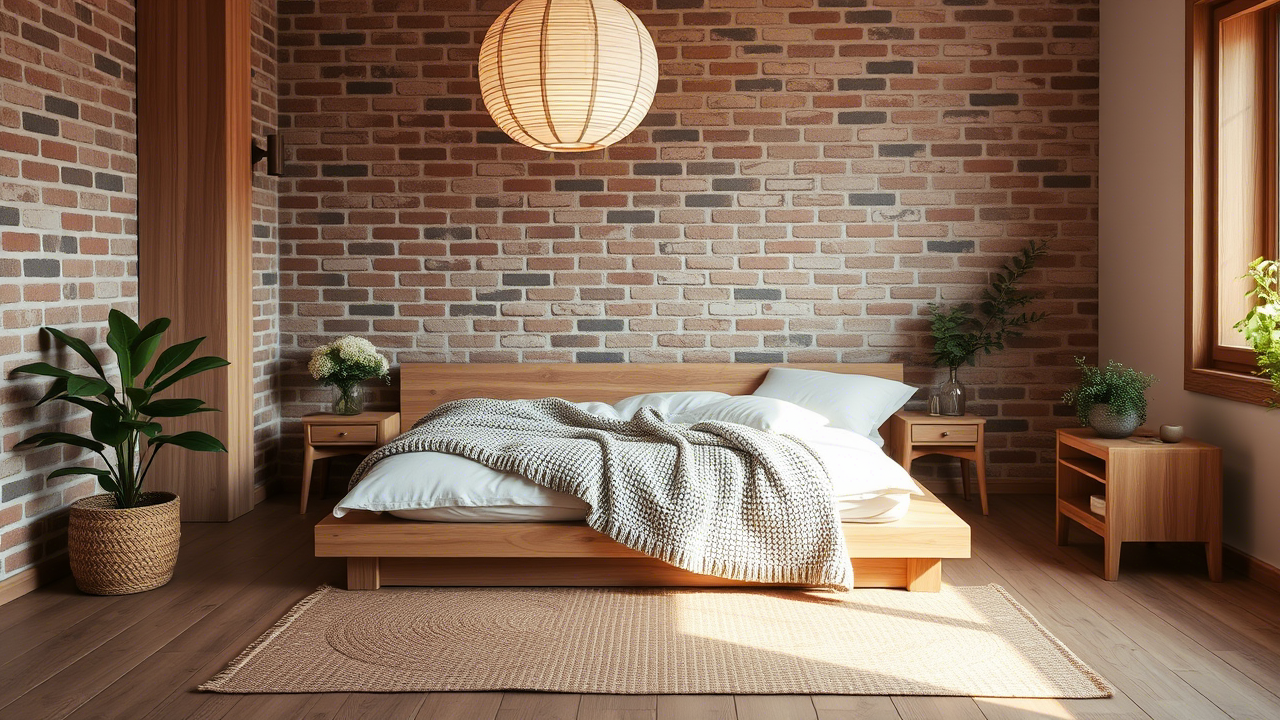Ever walked into a room and just breathed? Like, a deep breath you didn’t even realise you needed to take. That’s the Japandi vibe. It’s clean, soft, a bit moody, and somehow warm in the quietest way. You’re not just decorating a bedroom—you’re creating a slow, thoughtful kind of sanctuary.
Japandi design is what happens when Japanese minimalism and Scandinavian warmth bump into each other, maybe spill some tea, and then decide to be best mates. It’s calm without being cold. Minimal without feeling empty. Cozy, but not cluttered. If that sounds like a contradiction—it is. But somehow, it works. And it works so well in bedrooms.
Let’s jump into 20+ cozy Japandi bedroom ideas that you’ll probably want to copy immediately. Or at least pin for that dream home board you never show anyone.
1. Low-profile beds – like sleeping on calm itself
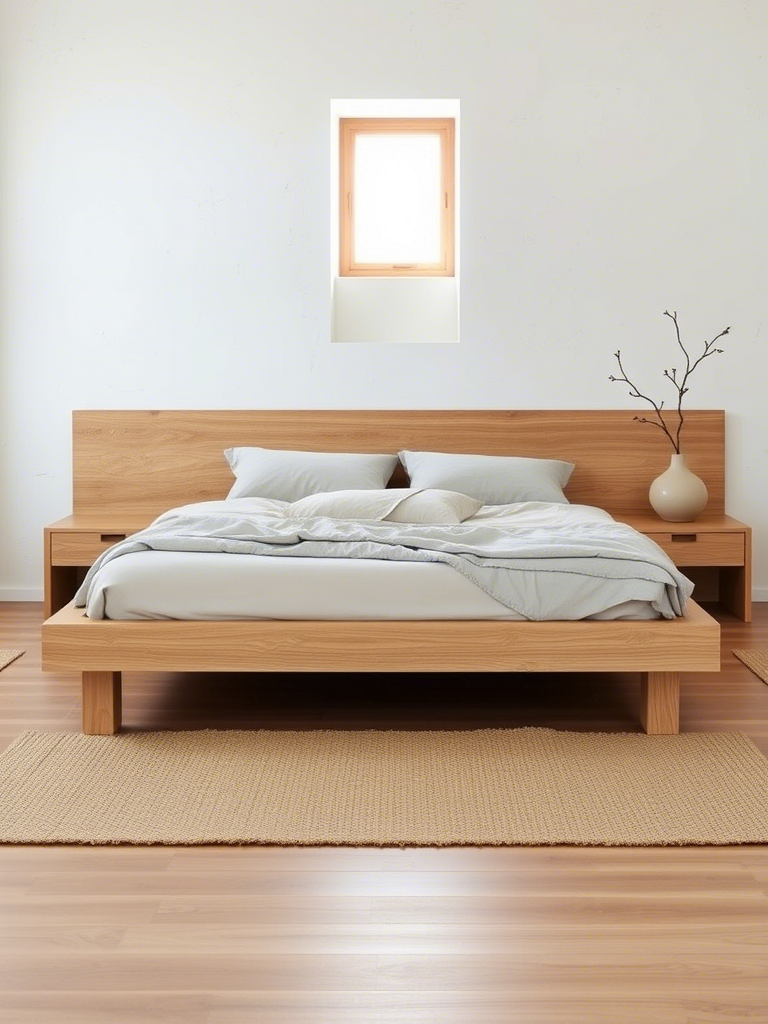
First thing. Get that bed low. Japandi style doesn’t mess with lofty, princess-tower beds. It’s close to the ground. Almost floating. There’s something deeply grounding (pun slightly intended) about lying low.
A platform bed with simple wood grain, maybe ash or walnut. No bed skirt. No chunky headboard trying to be the main character. Just clean lines, good craftsmanship, and space to breathe underneath. Throw a soft linen duvet on top, rumpled just a bit, like you live here, not in a catalog.
It’s not a look that shouts for attention—it whispers. And honestly, it whispers sleep better.
2. Neutral colors that don’t bore you to death
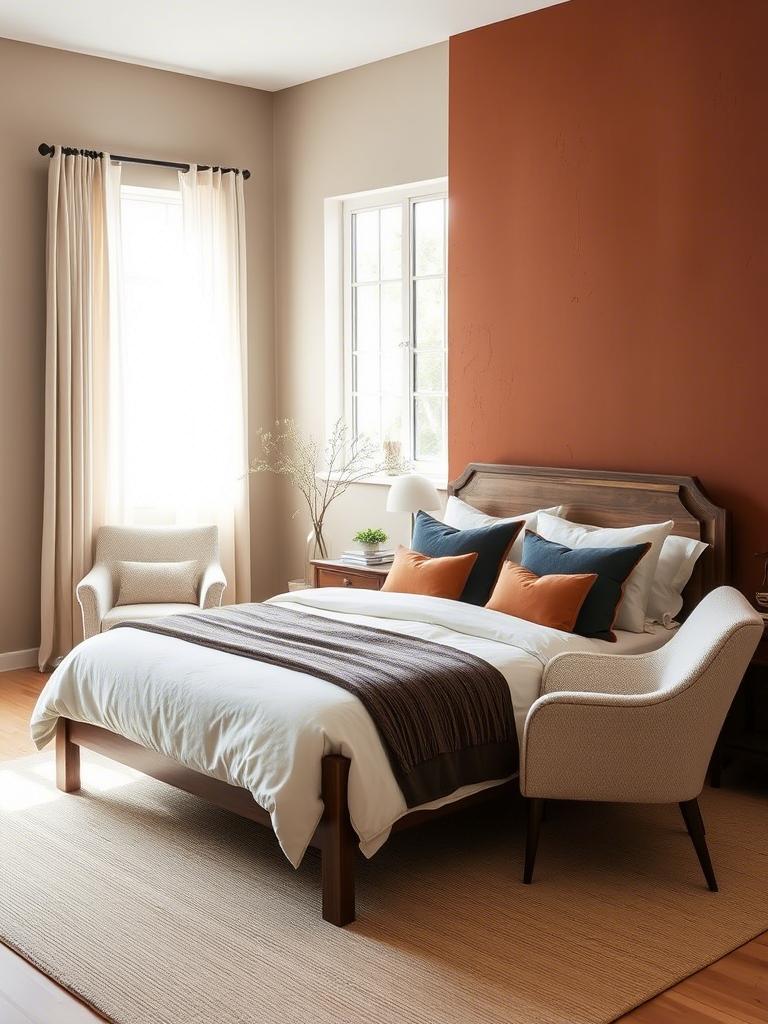
You might think neutral means fifty shades of beige. But nah—not here. Japandi neutrals are all about earthy tones that feel alive. Think warm stone, soft clay, driftwood, sage leaf after rain. That kinda thing.
Paint the walls something like “greige” (yes, it’s a real color—somewhere between grey and beige). Layer in shades with natural fabrics: cotton, hemp, linen, maybe even a little wool.
Avoid stark white like it’s an awkward ex at a party. Instead, go for warmth. You want neutrals that hug you, not slap you in the face.
3. Decluttered, but not like a hospital
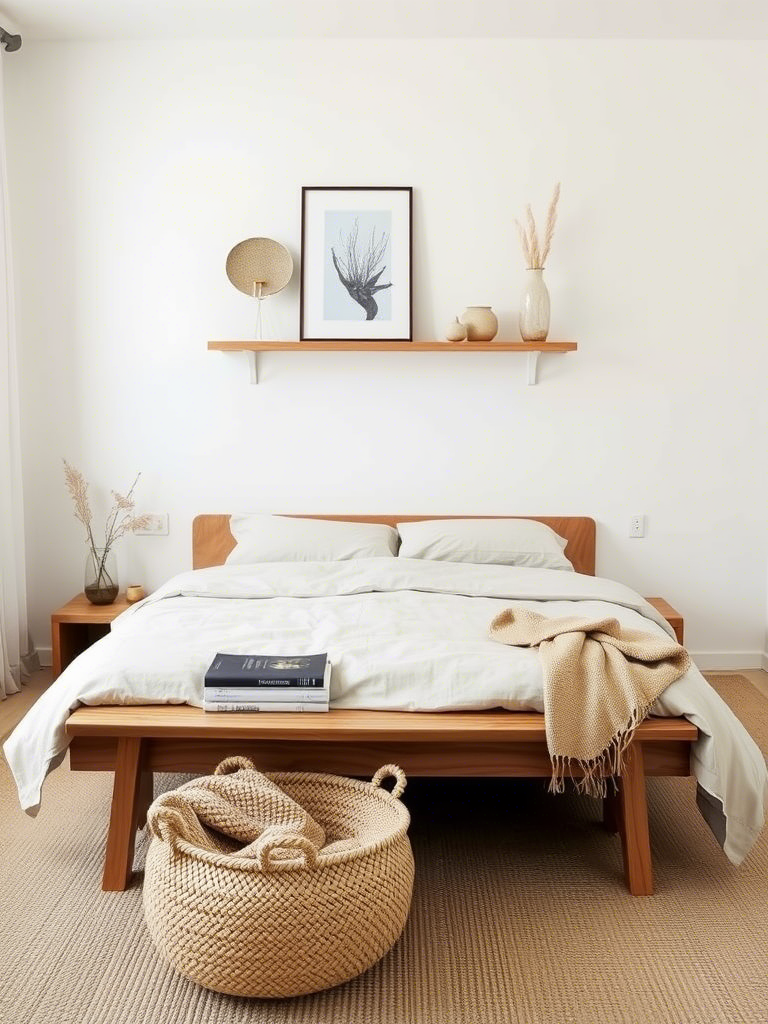
Listen, minimal doesn’t mean soulless. It just means intentional. Everything in your bedroom should feel like it belongs there, not like it wandered in accidentally.
Got five candles? Keep one. Toss the other four in the donation box—or at least hide ’em away for now. Use one beautiful ceramic vase instead of a shelf of trinkets you forgot you even had.
But don’t sterilize the space. A book on the nightstand, a half-burned incense stick, your favorite mug—that’s the stuff that makes the room yours, not a showroom.
4. Let that wood show off a bit
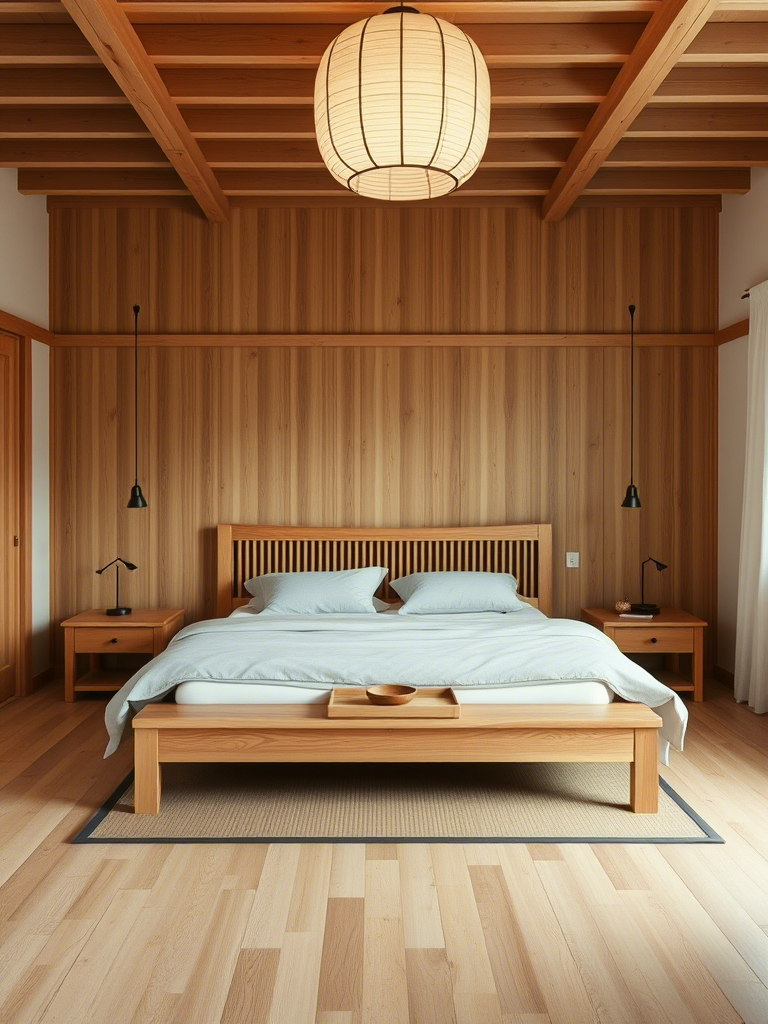
Japandi worships wood like it’s a religion. But not the shiny, plastic-y kind. You want wood that looks and feels real. That shows knots and grain and little imperfections that make it better, not worse.
Go for oak, pine, bamboo, walnut—whatever feels good to you. Bed frame, dresser, floating shelves, even the floorboards if you’re lucky. Keep it matte. Keep it natural. Bonus points if it smells a bit woody too.
Wood in Japandi isn’t just decor. It’s a presence. It’s a reminder you’re surrounded by natural things, not factory vibes.
5. Lighting that sets a whole dang mood
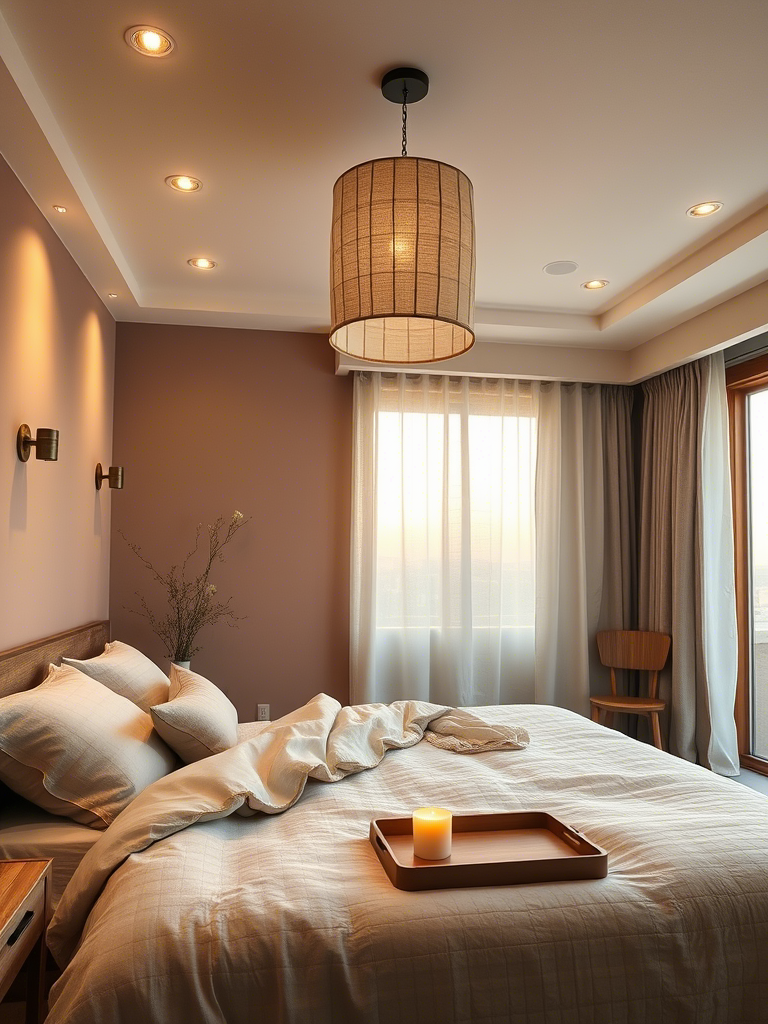
You know that overhead light in your bedroom that makes everything look like a dentist’s office? Turn it off. Better yet, uninstall it. Harsh lighting is the enemy of Japandi.
Instead, go with layers. A soft bedside lamp with a linen shade. Maybe a paper lantern or two—those ones that make your room look like a quiet night in Tokyo. And candles. Always candles. The flicker of a flame does more for cozy vibes than any fancy bulb could dream of.
Pro tip? Get a dimmer. Makes all the difference between “I’m reading” and “I’m vibing.”
6. Textures that whisper sweet nothings
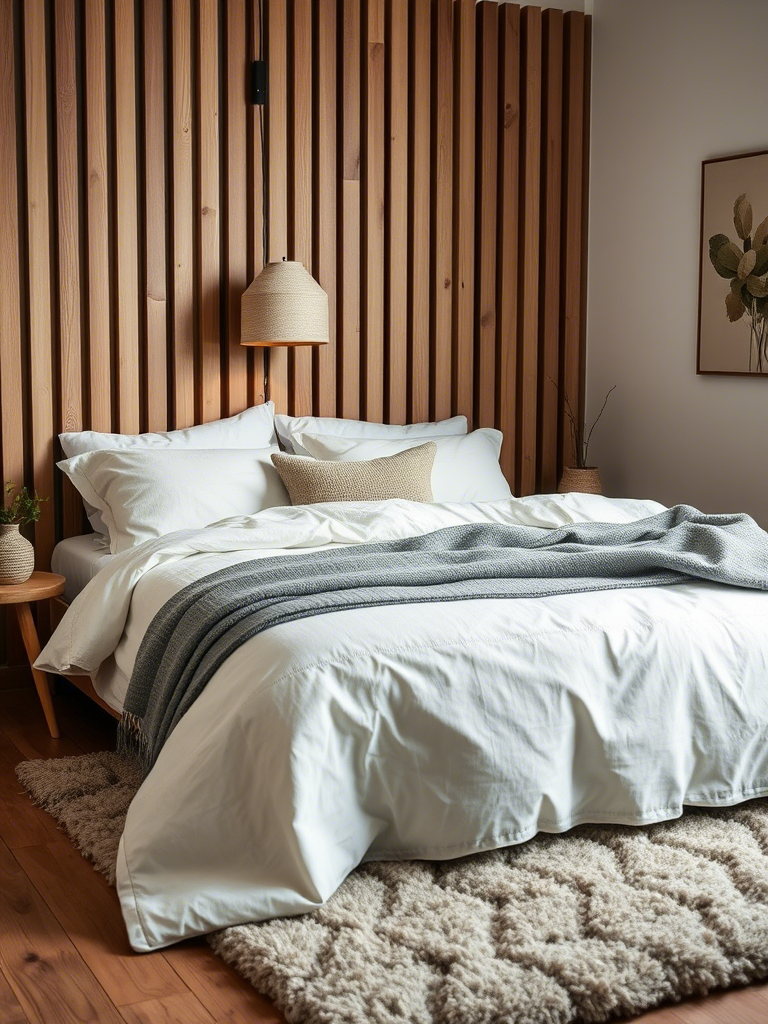
You know when you brush your hand across a throw blanket and it’s just—mmph—perfect? Japandi design thrives on that. Texture is key. But quiet texture. Not shiny, loud, Instagram-trendy fluff.
Layer your bed with linen sheets, a soft wool throw, and a handwoven rug that’s got just enough give when you step on it. A touch of raw ceramic here, a bit of rattan or cane there.
Everything should make you wanna reach out and touch it. But nothing should shout, “LOOK AT ME!” That’s not Japandi. That’s just thirsty.
7. Plants, but not a jungle
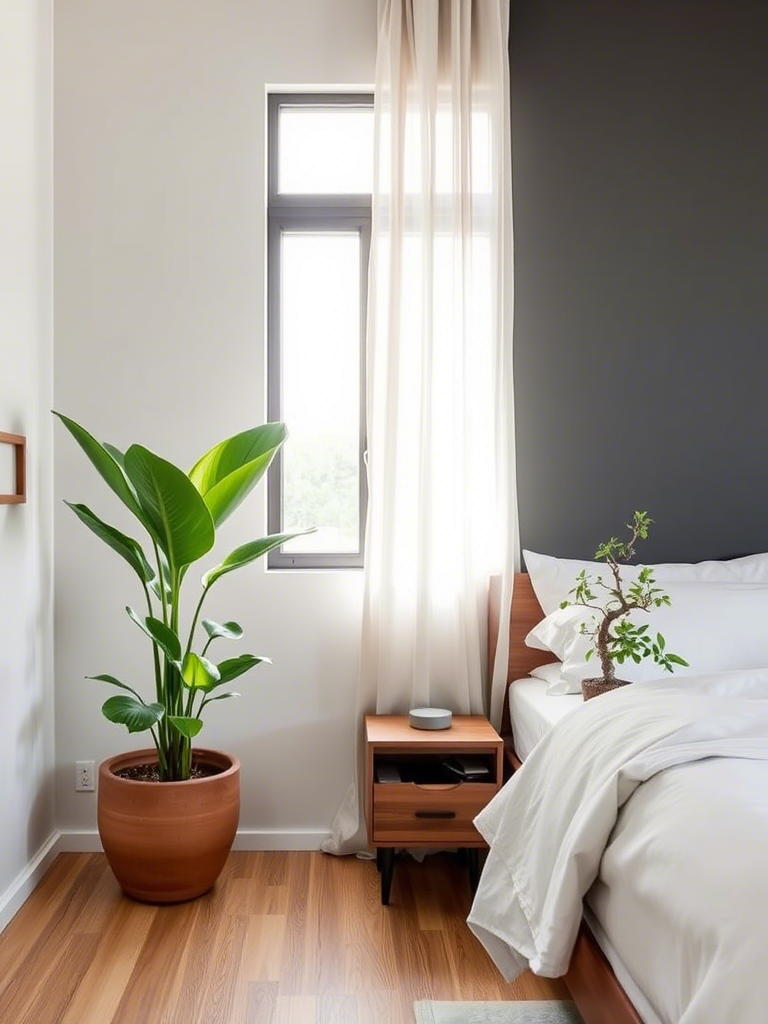
We all love plants. They clean the air. They’re pretty. They don’t talk back. But don’t turn your Japandi bedroom into a botanical garden, yeah?
Choose one or two plants that bring calm, not chaos. A snake plant in a handmade clay pot. A little trailing pothos on a shelf. Maybe a bonsai if you’re feelin’ fancy and patient.
Keep the pots simple. No neon, no patterns. Let the plant be the star. The greenery adds life, but the right amount of life. Not an Instagram wall of leafy mayhem.
8. Storage that hides your mess like magic
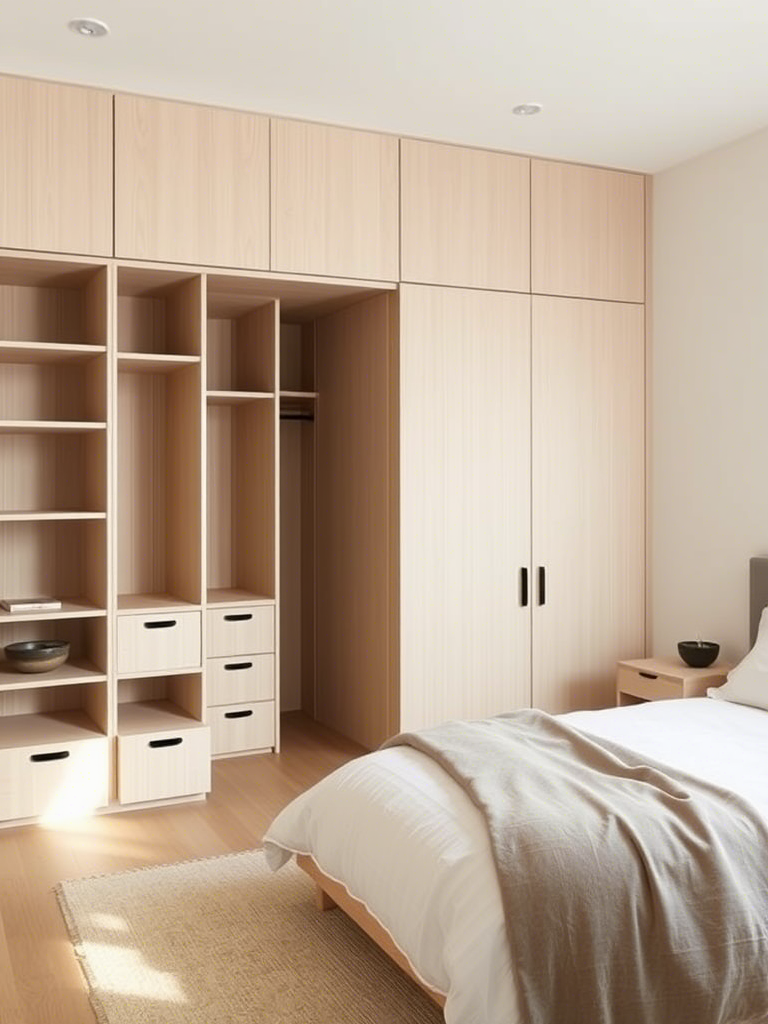
You’ve got stuff. We all do. But Japandi bedrooms don’t let that stuff spill out all over the place like it pays rent. That’s where good storage comes in.
Under-bed drawers. Low wooden chests. Floating shelves that keep things off the floor without turning into junk display zones. Hide the chaos, show the calm.
Storage should feel like it belongs. Nothing clunky. Nothing plasticky. Think: wood, canvas, maybe woven baskets. Your clutter’s in there? Cool. No one needs to know.
9. Art that’s basically a deep breath
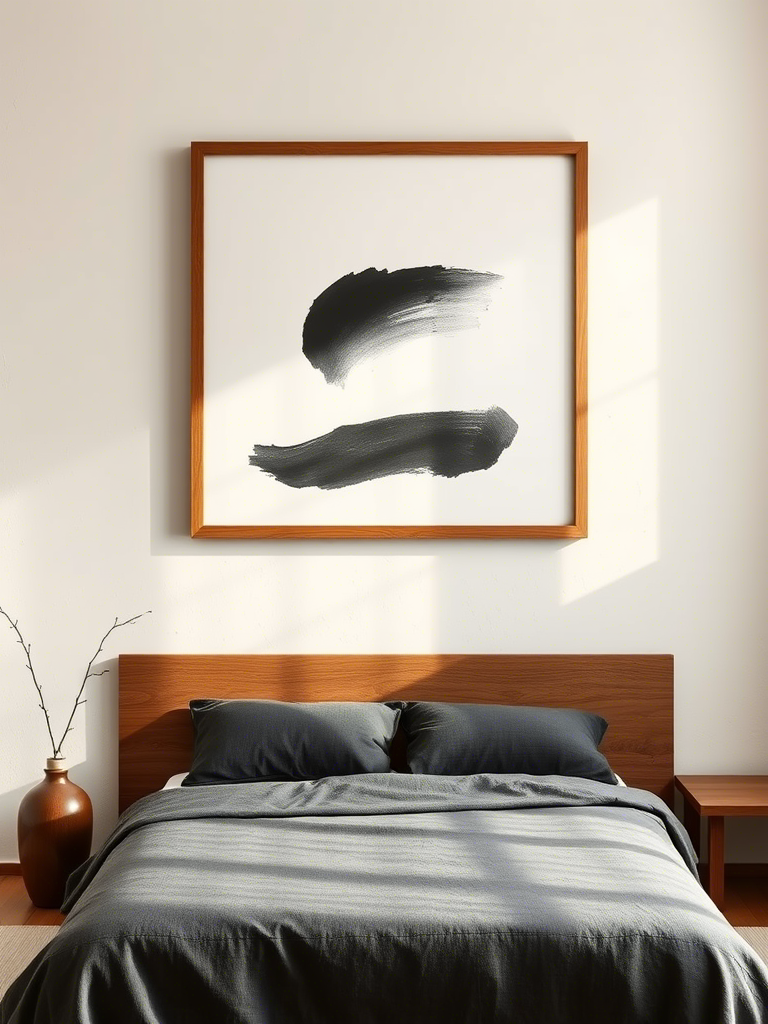
Skip the loud prints. No giant motivational quotes or abstract splatter paintings here. Japandi wall art is subtle. Almost shy. But somehow, it says more because it says less.
A simple brushstroke print. A line drawing. Maybe a piece of handmade textile art with imperfect stitching. One piece per wall is often enough.
This is where you let negative space do its thing. Let your eyes rest. Let the room breathe. Let your art feel like a pause, not a statement.
10. A vibe that says, “slow down, you’re home now”
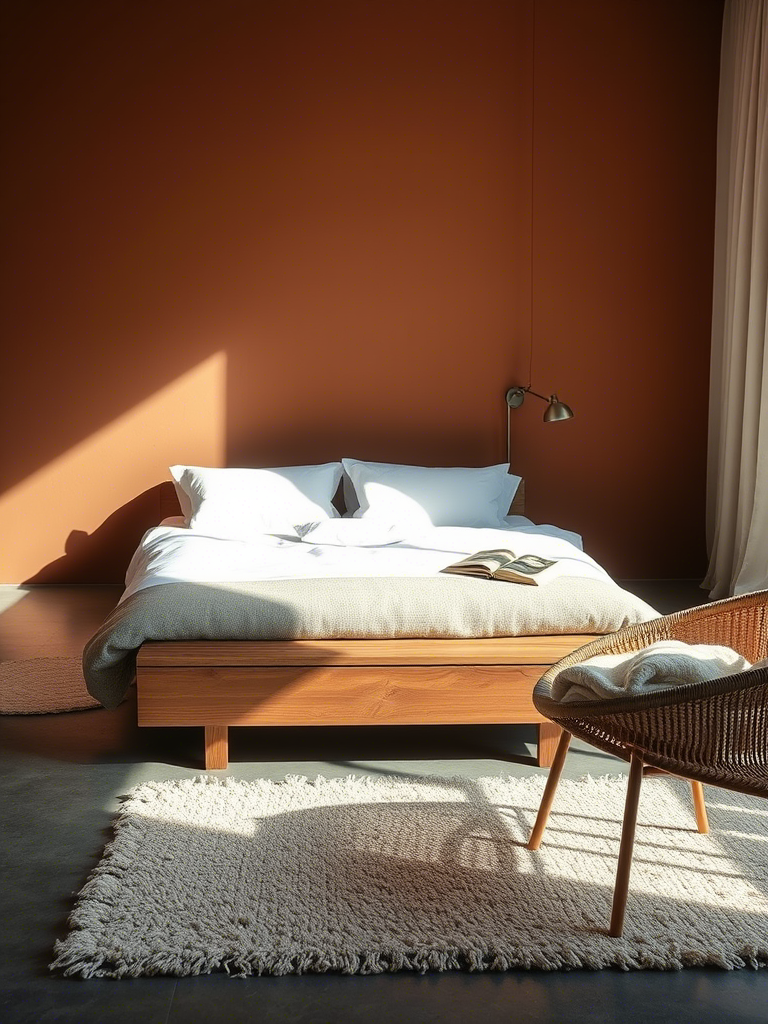
More than any one item or layout trick, Japandi is a feeling. It’s walking into your bedroom and feeling like the world outside can wait. Like your brain gets to take its shoes off too.
You build that vibe with intention. With care. With silence in the corners and softness in the sheets. You don’t rush it. You don’t force it. You live in it.
And you realise—hey. Maybe you don’t need more stuff. Just better things. The right things. The ones that let you exhale.
11. Shoji screens as subtle room dividers
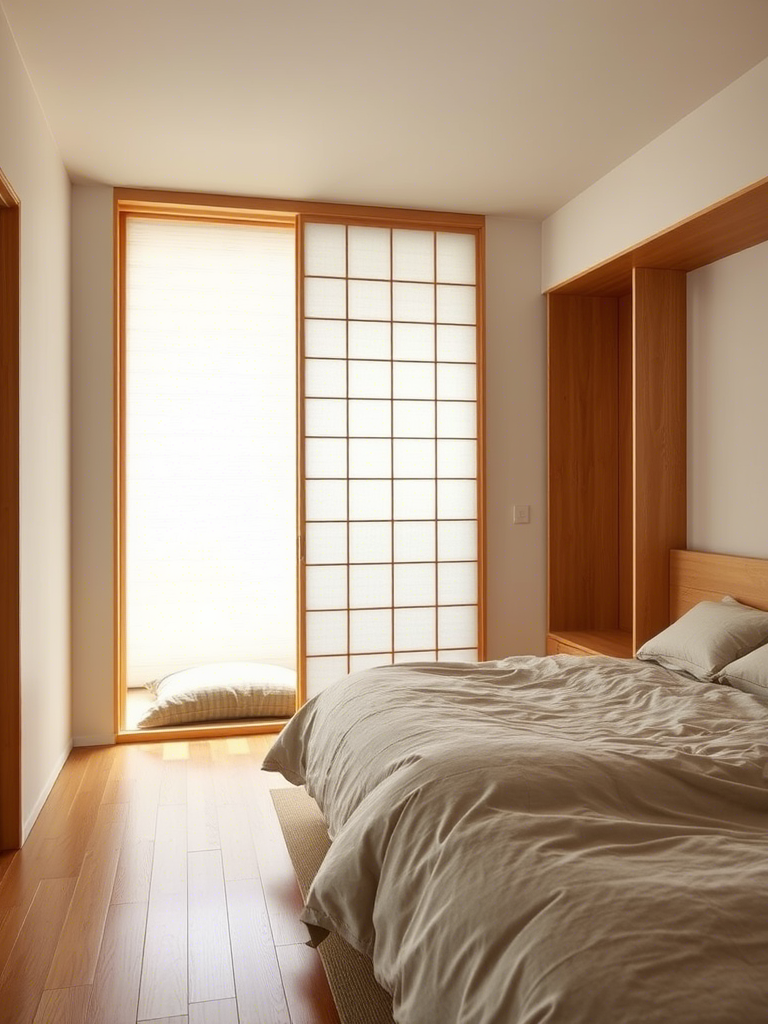
Instead of big walls or bulky furniture, use shoji screens. Those translucent, wooden-lattice panels from Japan add privacy without blocking light. They soften the space and create a quiet separation between sleeping and dressing zones. Plus, they fold away when you want more room.
12. Mix matte and natural finishes
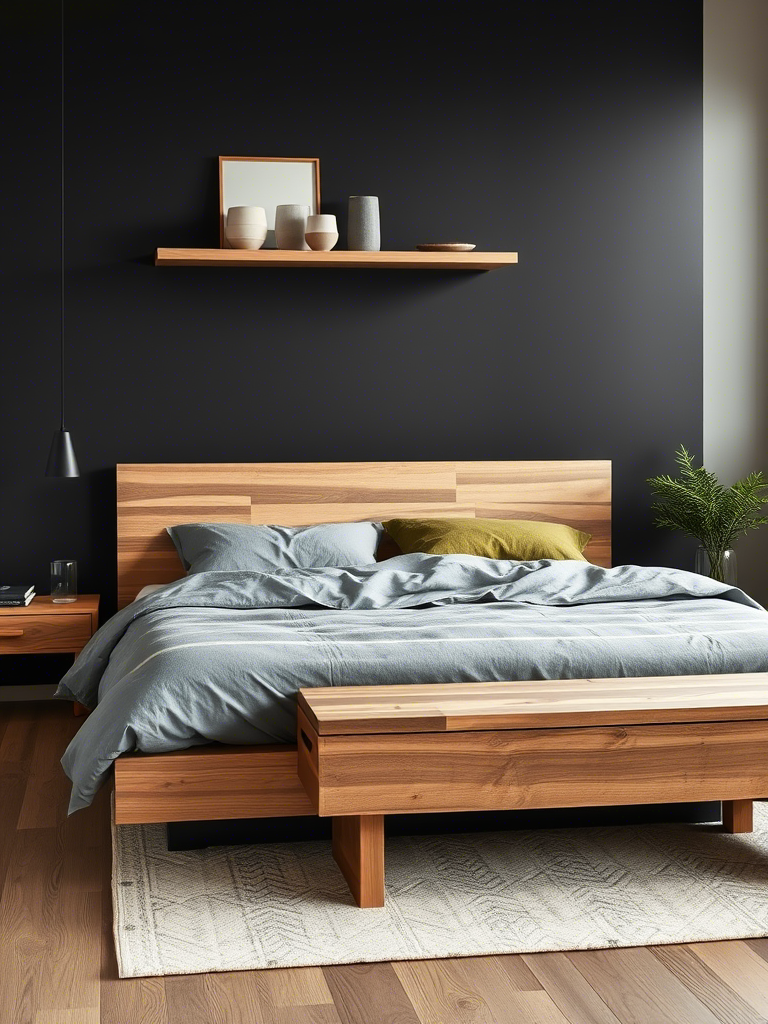
Japandi is all about texture and depth, so try blending matte ceramics with raw wood surfaces. For example, place a matte black vase on a smooth wooden dresser. That contrast keeps things interesting without screaming for attention. It’s like a quiet dialogue between materials.
13. Add a tatami-inspired floor corner
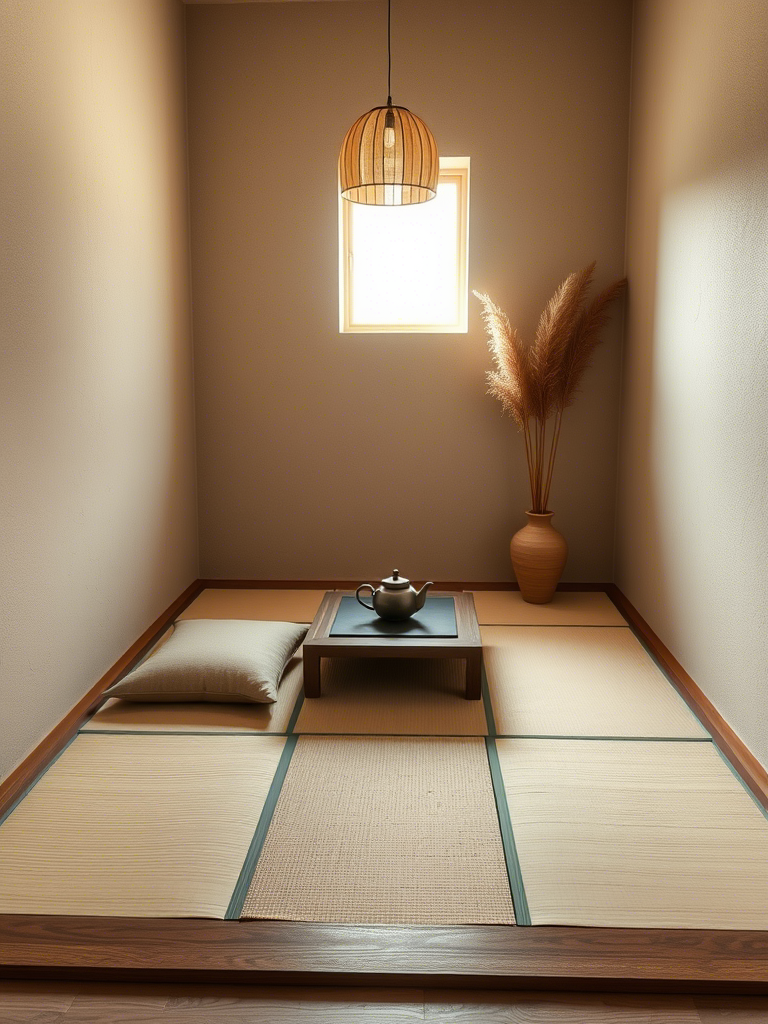
If you’re brave, bring in a small tatami mat area as a reading nook or meditation spot in the bedroom corner. It’s a tactile way to honor Japanese tradition and creates a cozy little zone that invites you to sit down and just be. Bonus points if you add a floor cushion or two.
14. Use soft, organic cotton curtains
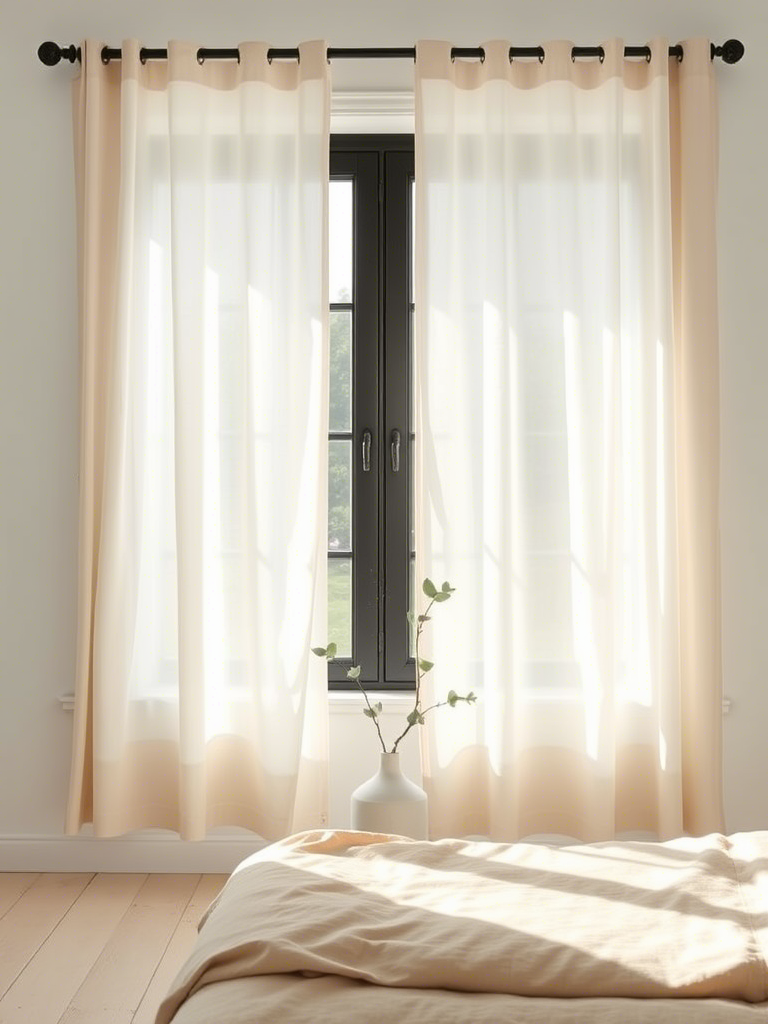
Forget heavy drapes. Japandi prefers light, breathable curtains made from organic cotton or linen. Let natural light gently filter through, bathing the room in softness. This keeps things airy and natural, perfect for waking up slowly with sunlight instead of a harsh glare.
15. Incorporate a minimalist wooden bench
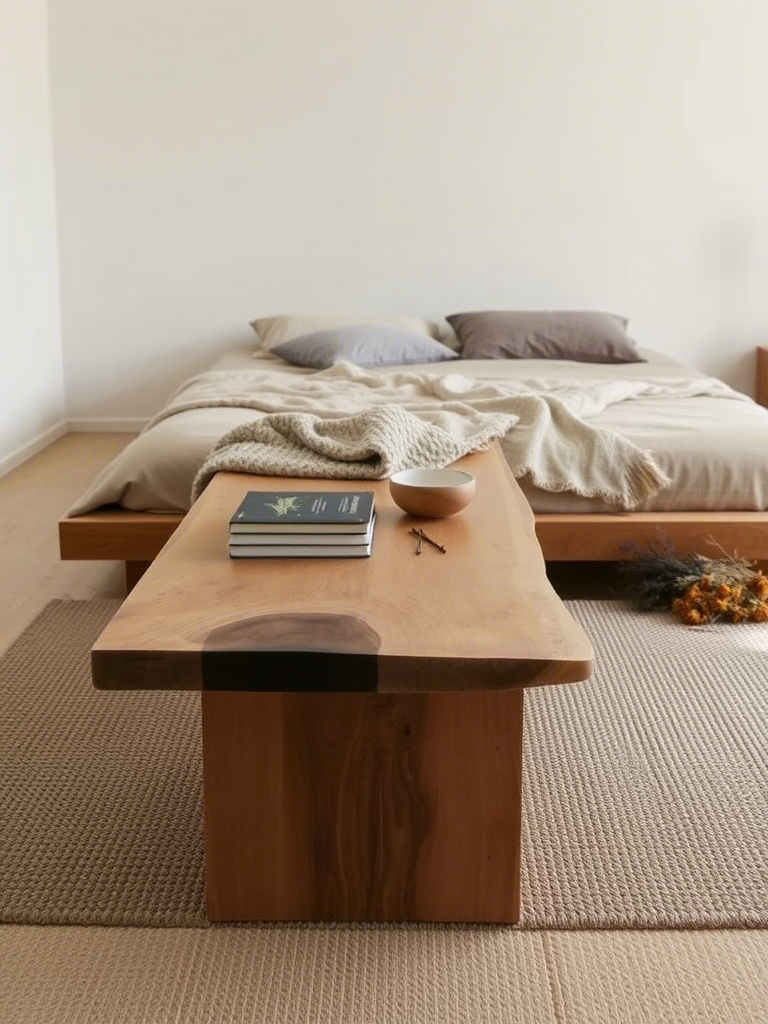
A simple wooden bench at the foot of the bed isn’t just functional—it’s also a quiet statement. Use it for folding clothes, placing a tray of morning tea, or even setting out your clothes for the next day. Choose a design with clean lines and a smooth finish to keep the vibe calm.
16. Bring in handmade pottery for personal charm
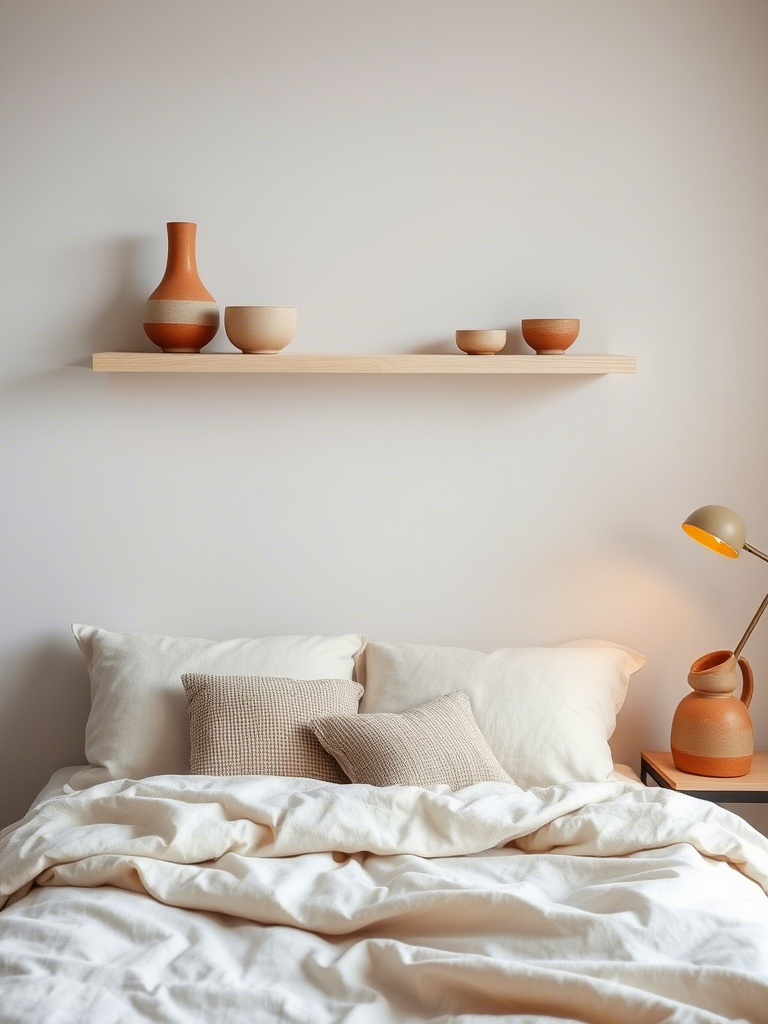
Japandi loves things made by hand because they carry soul. A handcrafted ceramic bowl or mug on your nightstand adds a human touch. It’s a tiny detail that reminds you the space isn’t perfect—and that’s perfectly okay.
17. Introduce subtle Japanese calligraphy prints
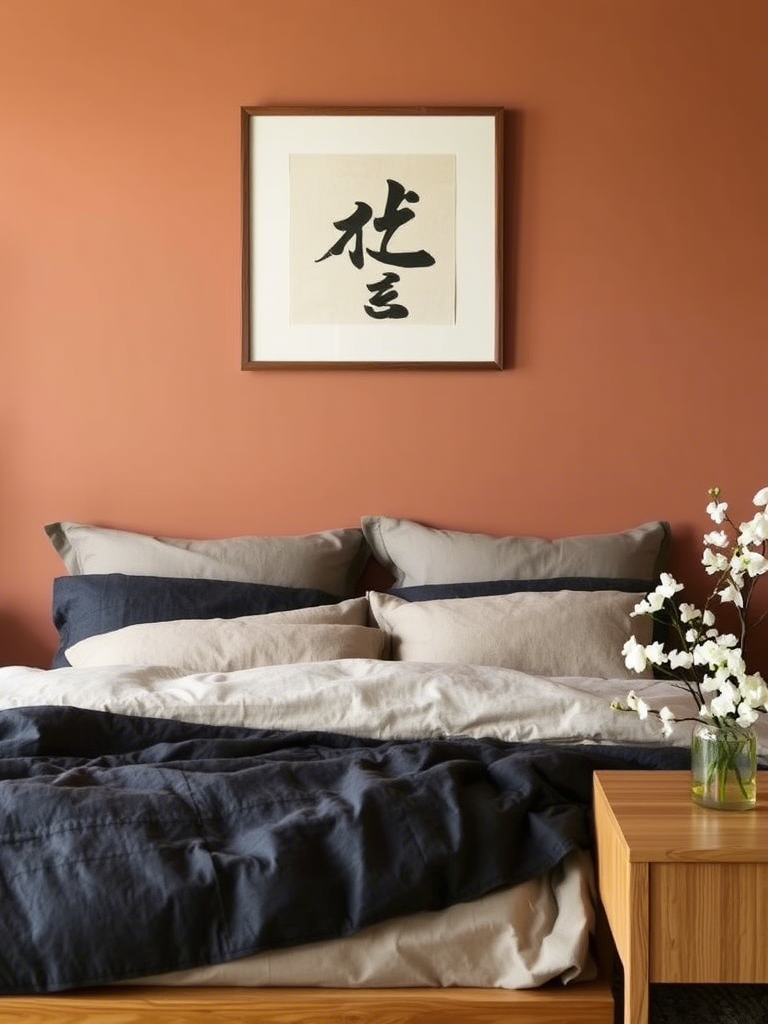
Art doesn’t always mean color explosions. A framed calligraphy piece with a simple kanji character for “peace,” “calm,” or “dream” adds quiet meaning. It’s minimal but deep—inviting reflection every time you glance at it.
18. Use rattan or bamboo pendant lights
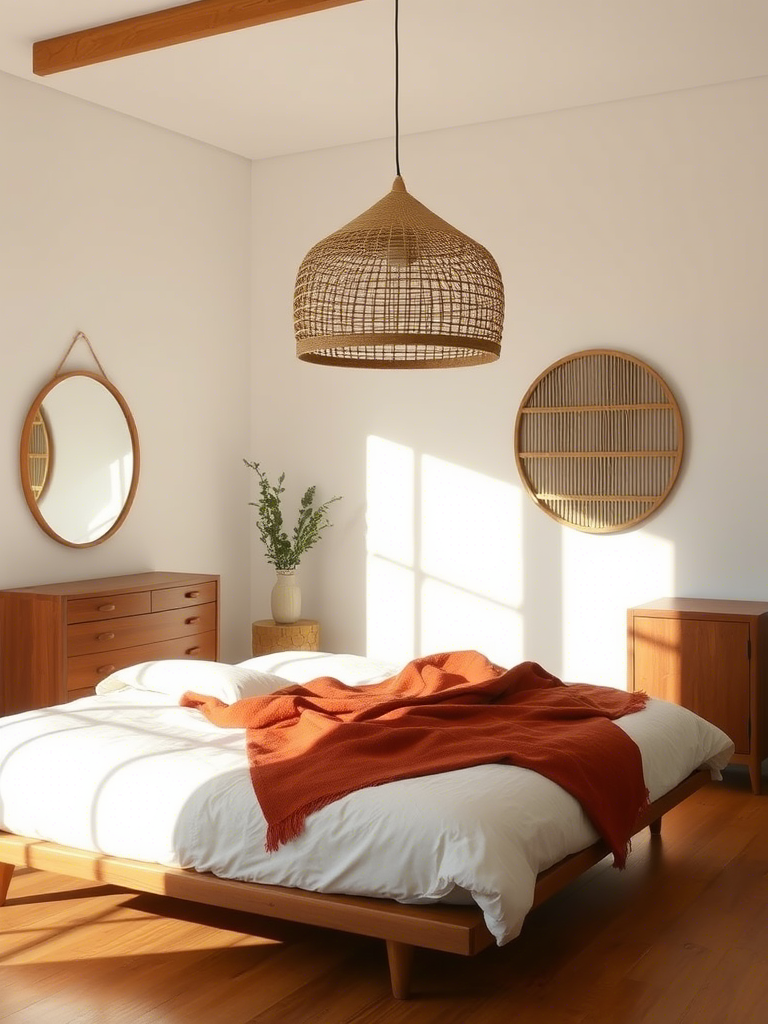
Instead of typical lamps, hang a pendant light made from natural fibers like rattan or bamboo. It casts soft shadows that dance on the walls, adding warmth and texture without bulk. Plus, it’s a clever way to bring nature indoors without extra plants.
19. Experiment with layered rugs
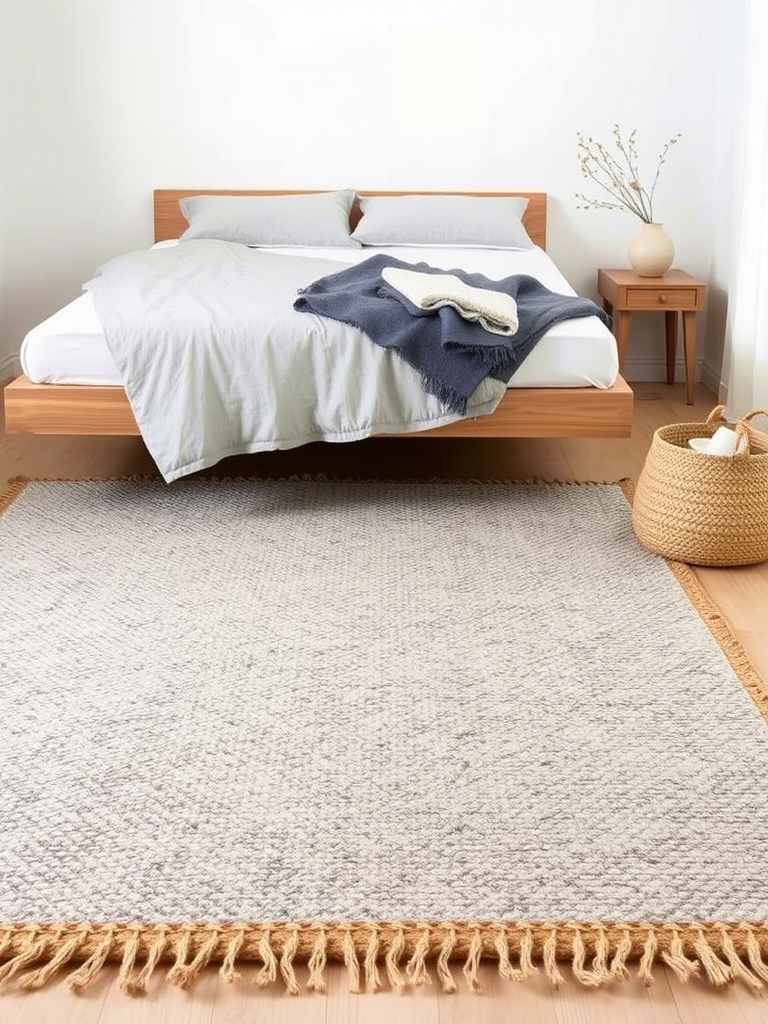
Japandi often embraces layers, so try placing a small, natural fiber rug like jute over a larger soft wool rug. The contrast of rough and smooth underfoot adds coziness without clutter. This layered approach keeps things tactile and inviting, especially in chilly seasons.
20. Add a simple wooden ladder for textile
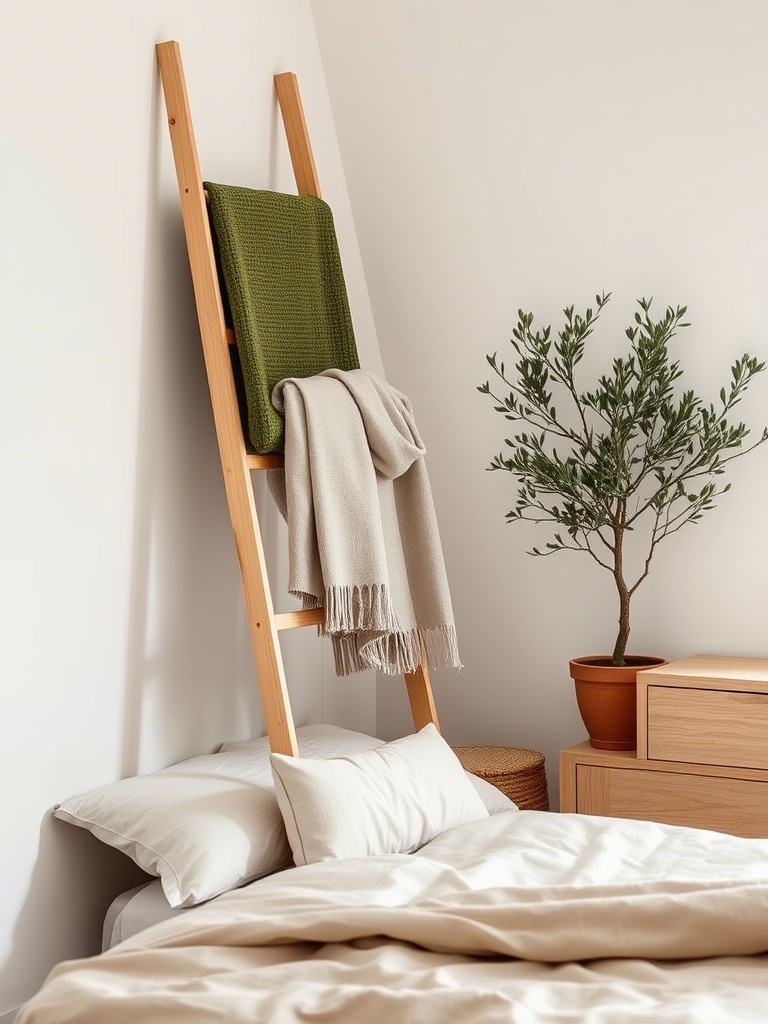
Use a slim wooden ladder against a wall as a storage/display piece. Drape your throws, blankets, or scarves over it. It’s a minimalist way to add texture and keep cozy items handy without bulky baskets or shelves. Plus, it looks effortlessly chic.
Final Thoughts
A Japandi bedroom isn’t about chasing some trendy aesthetic. It’s about creating a space that gives you peace. A place that doesn’t buzz with noise or ask for attention. One that’s just there. Softly. Quietly. Holding space for your rest.
You don’t need to buy a ton of new stuff. Maybe you start by removing things. Rearranging what you already have. Maybe just getting rid of that loud-ass lamp that’s been irritating you forever.
And the best part? Japandi doesn’t get old fast. Because calm never goes outta style.
Take it slow. Change one corner. One wall. One drawer. You don’t have to turn your whole life into a Pinterest board overnight. Japandi would probably side-eye you for that.
Let your bedroom become a pause. A soft, warm one.
And honestly, don’t be surprised if you start sleeping better. Or waking up a little happier. That’s what calm does. It sneaks up on you.
In the best way.
FAQs
What is Japandi bedroom design?
Japandi bedroom design is a blend of Japanese minimalism and Scandinavian coziness focused on calm, natural, and functional spaces.
Why choose a low-profile bed for Japandi style?
Low-profile beds create a grounded, serene feel that aligns perfectly with Japandi’s minimalist approach.
What colors work best in Japandi bedrooms?
Soft, earthy neutrals like greige, warm stone, and clay tones are ideal for Japandi bedrooms.
How important is natural wood in Japandi decor?
Very important—it adds warmth, texture, and an organic touch that defines the Japandi aesthetic.
Can I use plants in a Japandi bedroom?
Yes, but keep it minimal with just one or two simple, low-maintenance plants.
What type of lighting suits Japandi bedrooms?
Soft, layered lighting with dimmers, paper lanterns, and candles create the perfect cozy atmosphere.
How do shoji screens enhance Japandi bedrooms?
They provide privacy and softly diffuse light while maintaining an airy, open feel.
Are handmade items recommended in Japandi design?
Absolutely, handmade pottery or textiles add soul and authenticity to the space.
What kind of art fits Japandi bedrooms?
Minimalist art like subtle calligraphy or simple line drawings complement Japandi style best.
How can I add texture without cluttering in Japandi design?
Layer natural fabrics and rugs thoughtfully to add tactile warmth without overwhelming the space.

Emma is a passionate home decor enthusiast and the voice behind Home Evoke. With a keen eye for design and a love for transforming spaces, she shares her expertise and creative ideas to help others create beautiful, functional homes. Through her blog, Emma inspires readers with practical tips, trend insights, and DIY projects that make home styling effortless and enjoyable.

